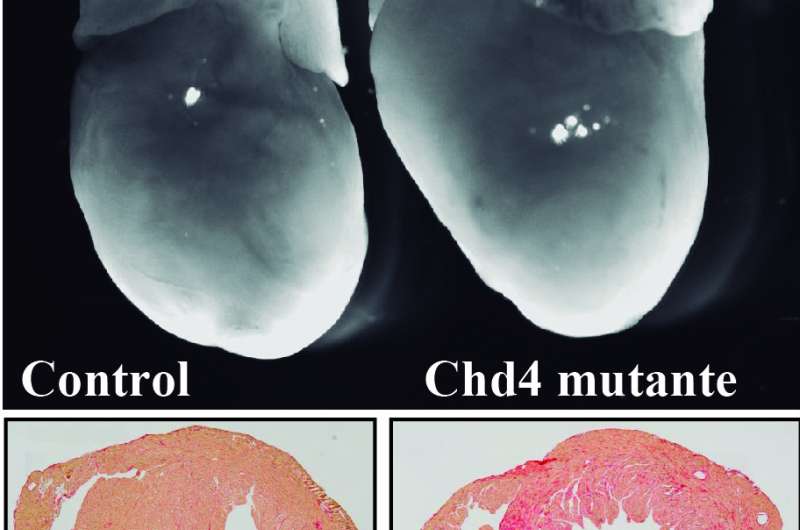Researchers discover the molecular mechanisms that produce the heart's contractile structure

Researchers at the Centro Nacional de Investigaciones Cardiovasculares Carlos III (CNIC) have discovered an essential mechanism underlying the contractile structures in both the heart and skeletal muscle. When this mechanism is absent, hybrids of these 2 striated muscles are produced that are incompatible with life. The study, published in Cell Metabolism, opens new horizons for the study of striated muscle physiology by unveiling "molecular mechanisms that control the structural identity of cardiac and skeletal muscle tissue". The findings also suggest a route to possible future interventions in certain heart conditions, such as some types of dilated cardiomyopathy, or in polymyositis-type myopathies.
The heart and skeletal muscle are contractile organs that respectively carry out the vital physiological functions of blood pumping and bodily movement. Although each striated muscle has a different embryological origin, they share a very similar contractile structure. However, the contractile proteins in each tissue are encoded by different genes. The contractile structure, called the sarcomere, is able to contract and relax with each heart beat or bodily movement, and it is the sarcomere that gives each of these muscle types their striated appearance. Any error in the regulation of the specific sarcomere proteins has severe consequences and can be fatal.
The mechanisms that regulate expression of the cardiac and skeletal-muscle contractile proteins are well known, but before now no study had addressed the mechanism by which each tissue shuts down the expression of the contractile proteins of the other.
The study published in Cell Metabolism solves this mystery. The CNIC investigators, supported by an international research team that includes scientists at the Universidad Autónoma de Madrid, the Universidad Pompeu Fabra in Barcelona, and the Max Planck Institute for Heart and Lung Research in Bad Nauheim in Germany , analyzed the functions of the NuRD protein complex in both muscle types.
The study, led by Juan Miguel Redondo, shows that elimination of the NuRD component Chd4 in cardiac tissue causes "aberrant expression of the contractile proteins from skeletal muscle". First author Pablo Gómez del Arco explains that this has lethal consequences. "The mice lacking Chd4 in the heart develop severe myocardiopathies accompanied by malign arrhythmias, causing sudden death."
Gómez del Arco goes on to describe how this effect is reciprocated in skeletal muscle. "Chd4 elimination in skeletal muscle leads to the aberrant expression of contractile proteins specific to the heart, giving rise to problems similar to those observed in some human myopathies." Gómez del Arco explains that Chd4/NuRD thus acts as a "molecular key" that shuts down the skeletal muscle program in the heart and the heart program in skeletal muscle. The absence of this protein results in the formation of a "hybrid" striated muscle that expresses the contractile proteins of both tissues, and this might explain the phenotype of some dilated cardiomyopathies and polymyositis-type myopathies with no known cause.
The study authors think that the study findings could help in the design of future treatments and diagnostic tools for these conditions.
More information: Cell Metabolism, DOI: 10.1016/j.cmet.2016.04.008

















